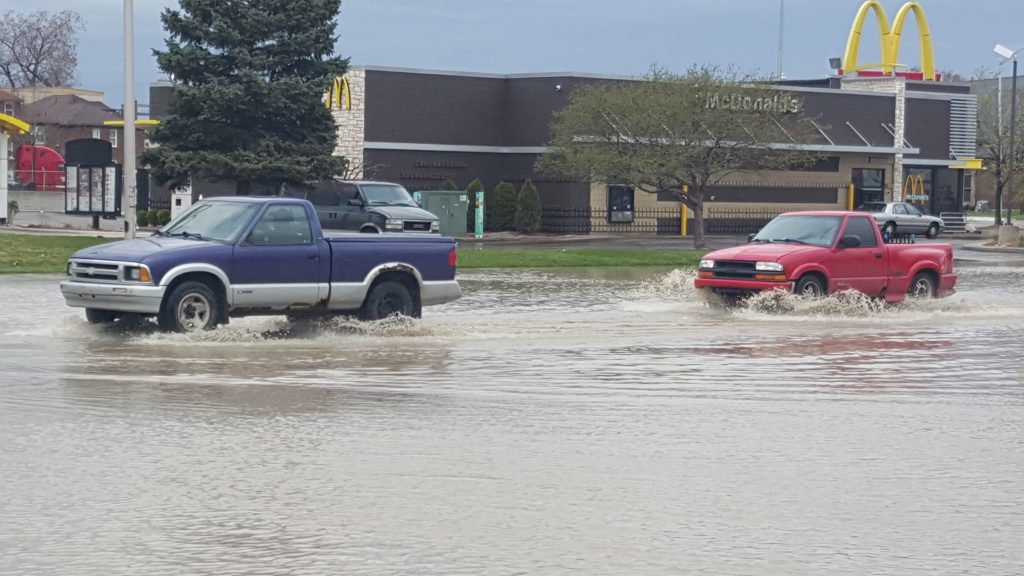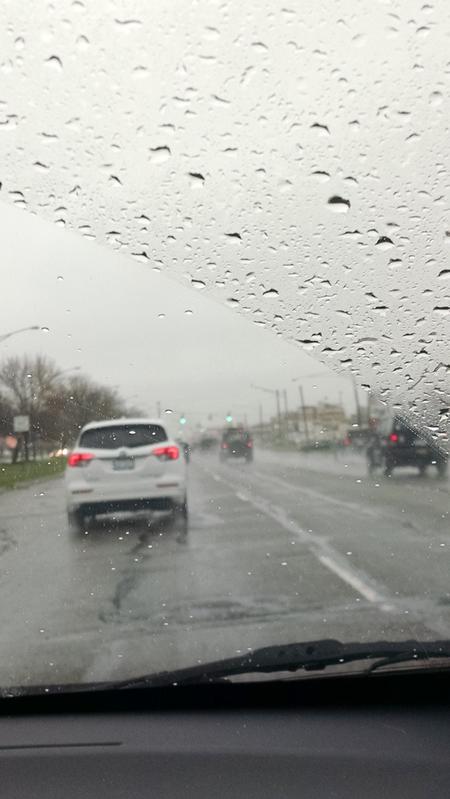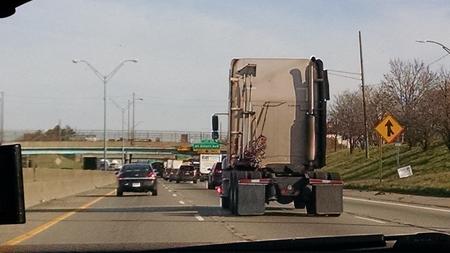Are People Driving Crazier Than Ever Before?
Experts say cutthroat driving is getting worse. Want evidence? They say look at crash stats. Or outside a windshield.


Over the weekend a driver was pulled over in Florida for cutting into traffic.
In this case it was an attempt to cut through President Trump’s motorcade.
But talk to some drivers around Metro Detroit and they’ll say they are not surprised by bad behavior behind the wheel, either in Michigan or anywhere else in the country.
And experts say dangerous driving is a trend that shows no sign of hitting the brakes.
It may even be getting worse.

A Personal Attack in Traffic
At the height of afternoon rush hour, on a freeway heading out of Detroit, veteran Uber driver Gary Bell grits his teeth as he hits the throttle to prevent another motorist from shoving their car in front of him.
“If I hadn’t sped up that guy would’ve cut me off,” Bell says, honking his horn for emphasis. “He would’ve got into my little comfort zone.”
Bell says he strives to keep a cone of protection one or two car lengths behind another vehicle.
But he says if he’s found out anything in his two years of working for Uber, it’s that it does not matter what a person’s race, age or gender is. He says they all often drive like they’re crazy. Especially on the highways.
People are not just driving crazy, Bell says.
“They’re driving crazier. The people seem to be more aggressive and in a hurry. It’s constant. It’s happening way more than it used to be two years ago,” Bell says.
Bell frowns, noting that the couple car lengths he stays behind a vehicle in traffic leaves an inviting gap on the highway.
“(They’re driving) crazier…When a person gets into your space (in traffic) that’s a personal attack. And so people take it personally. So now you wanna retaliate.” – Uber driver Gary Bell
Bell says he has to decide whether to either back away from that gap or protect it.
“And by you pulling up or you stopping someone from getting in your space, they get pissed off because they feel that you should let them in. But what I do is I don’t look at ‘em eye to eye. Don’t have no eye to eye contact, just go on and keep my head straight. They be taunting me, you know. They be looking or blowing the horn at me.”
Bell says the more he’s matured, the more he backs out of such situations.
But he says it can be hard to condition yourself to do that, especially for a young driver who sees another diving for his highway comfort zone.
“When a person gets into your space, man, that’s a personal attack,” Bell says. “And so people take it personally. So now you wanna retaliate. Especially if you come from the old school where you’re taught men are supposed to win. And here this guy come over and cuts you off or whatever. That brings out the competitive spirit, that brings out the anger, that brings out the ‘I must win.’ “
Driving is the Distraction
But lives are being lost at an accelerating rate on the nation’s roadways.
The National Transportation Safety Board reports almost 40,000 people died in vehicle accidents last year, a five percent increase over the year before. Most of the fatalities were on highways.
And despite increased holiday law enforcement patrols and safety awareness campaigns, many of those fatalities involve drivers under the influence.
The Michigan Office of Highway Safety Planning spokesperson Kendall Wingrove estimates one person dies about every hour from a drunk driving crash in the U.S., including in the home state of the domestic auto industry.
“It’s an ongoing problem. In 2016 416 people died in Michigan as a result of alcohol and/or drug-related traffic crashes. So it’s a problem we need to confront,” Wingrove says.
Some experts say there’s more accidents because there’s simply more people on the roads lately, since fuel prices have been so low.
But they also question whether drivers are paying enough attention to traffic.
A recent survey by the magazine Consumer Reports found that over half of those responding admitted to being distracted by their personal digital devices or by the increasingly complex, computerized controls inside their vehicle.

The magazines’ director of auto testing, Jake Fisher, says it calls for a new definition of “distracted driving.”
“The distraction may not be using your phone or being connected. To some the distraction may be driving. And their primary task is wanting to check their email or post to Instagram. And ultimately this may work if we had true autonomous cars that drove by themselves and people could sit there and they could do everything they want. But we’re not there yet.”
Fisher says safety features already built-in to vehicles, like automatic braking systems, can actually lull a driver into a false sense of security.
He says other devices, like GPS systems, have become so universal they are now seen by drivers as a necessity, not a distraction.
Cutthroat Driving and Raging Retaliation
Mount Clemens’ resident Donald Baker says he’s spent years as a professional driver in taxis and semi-trucks.
Baker says he finds his driving comfort zone by taking surface streets, even busy roads like Gratiot Avenue heading into Detroit.
“The distraction may not be using your phone or being connected. To some the distraction may be driving. And their primary task is wanting to check their email or post to Instagram.” – Consumer Reports’ Jake Fisher
He says the traffic is still intense, but not like it is on the freeways pouring vehicles into the city.
“Everybody’s doing 70 mph and tailgating even though the speed limit’s 55,” Baker says. “That’s just the way they are. Doesn’t matter what city. And I’ve driven all over the world. I was in the military for 20 years. I’ve driven in Madrid and London and it’s just as bad there. You get out in the countryside, they’re fine. They’re courteous, they’re easygoing. They get near the city and they all get hyped up and they want to cut everybody off. I guess it’s just human nature.”
From his standpoint, Baker says, drivers are not behaving more badly than usual.
He says it’s been scary driving around Detroit for decades.
Baker points to an incident he says happened roughly half-a-dozen years ago when he was guiding a big rig on a busy interstate.

“And I was in the slow lane. I wasn’t getting off the road. I was just going down I-696. And a lady from the fast lane, I saw her in my mirror. And she’s doing like 85 mph. She was screaming, fastest car on the road. She cut off two lanes of traffic to make that exit.
“I had to lock the tires up on the semi. The guy in the next lane over slid his car sideways to keep from hitting her. She didn’t even use her turn signal and she cut everybody off. She’s lucky somebody didn’t kill her. She’s lucky I didn’t roll over her in the truck. It’s not that easy to stop a semi when you’re going 65, 70 mph,” Baker says.
For once in his professional driving career. Baker snapped.
“I chased her down with the truck and I boxed her into a parking lot and I then called the cops,” Baker says. “She was calling the cops as well. We both called the cops at the same time. She thought I was trying to harass her or something. And I was just mad that she cut off 50 frickin’ people on Van Dyke.”
The outcome, Baker says, was definitive. And somewhat surprising to him.
“The cops showed up. I explained to them what’s going on. She got a ticket,” Baker says.
All of which begs the question, are those kinds of situations just part of 21st Century commuting? Or are drivers crazier than ever before?
The answer seems very subjective.
It may be that motorists must make their own verdicts the next time they hit the roads and watch what happens beyond their windshield.
